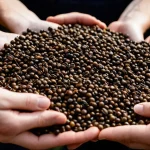Core Features of a Traditional UK Kitchen
A traditional UK kitchen is instantly recognizable by its distinct elements that combine functionality with heritage charm. Central to these kitchens are cabinetry styles like the Shaker and in-frame designs. The Shaker style, known for its simple, clean lines and recessed panel doors, emphasizes craftsmanship and durability, reflecting a classic British kitchen ethos. In-frame cabinetry, where doors fit within a sturdy frame, further enhances the sense of solidity and timelessness in the space.
Color palettes in traditional British kitchens commonly include muted tones such as cream, pale blue, sage green, and soft greys. These shades evoke a sense of warmth and calmness, complementing the natural materials often found in classic designs. The finishes are typically matte or satin, avoiding overly glossy surfaces to maintain an authentic, understated appearance. This consistency in color and finish reinforces the sense of tradition and uniformity characteristic of UK kitchen interiors.
Also to discover : What are the best storage solutions for UK apartments?
Certain fixtures are essential to defining the traditional UK kitchen. Farmhouse sinks, often large and made of ceramic or fireclay, serve as a practical and aesthetic focal point. Another hallmark is the Aga cooker, an iconic British appliance that combines cooking versatility with nostalgia. Its cast-iron construction and heat retention properties make it a staple in many classic homes. Traditional taps and handles, typically finished in brass or chrome with vintage styling, complete the look and enhance the period appeal of the kitchen.
Together, these features create a cohesive impression of a classic British kitchen that balances heritage with practicality. The cabinetry, palette, and signature fixtures anchor the space in tradition while meeting contemporary cooking and living needs.
Also to read : What are the most effective ways to incorporate smart technology in UK homes?
Materials and Craftsmanship
In a classic British kitchen, the choice of materials plays a pivotal role in defining the authentic traditional UK kitchen elements. High-quality woodwork—particularly solid oak, pine, or painted hardwood—is the backbone of cabinetry, emphasizing durability and historical accuracy. These woods allow for intricate carvings and the incorporation of period details such as beadboard panels and decorative moldings, which enhance the kitchen’s timeless appeal.
Stone surfaces, especially granite or slate, frequently feature in worktops, bringing robust, natural beauty that complements the warmth of wooden cabinets. The tactile contrast between wood and stone is a defining feature in a traditional kitchen, creating a balance between softness and solidity that resonates through classic British kitchen designs.
Craftsmanship is not merely about material selection but also the quality of finishes. Matte or satin paints safeguard the wood while preserving its character, unlike modern glossy alternatives. Careful attention to detail extends to period-appropriate hardware, where brass or pewter handles and hinges match the overall vintage aesthetic. This focus ensures that every element harmonizes with the rich history embodied in traditional UK kitchen elements, making quality and authenticity inseparable from the kitchen’s identity.
Traditional Appliances and Fixtures
In a traditional UK kitchen, the Aga cooker stands out as a defining feature among traditional kitchen appliances. Renowned for its distinctive heat retention and multi-oven design, the Aga is not only a cooking powerhouse but also a nostalgic symbol of British culinary heritage. It embodies the essence of classic British kitchen elements through its robust cast-iron construction and vintage aesthetic that complements period interiors.
Alongside the Aga, a butler sink—often referred to as a farmhouse sink—is another essential fixture. These sinks are typically large and deep, crafted from materials such as ceramic or fireclay. Their practicality is matched by their character, as the butler sink’s apron front design adds substantial charm and anchors the kitchen’s historical atmosphere. The generous capacity supports traditional cooking and washing routines, reinforcing the kitchen’s function as the heart of the home.
Traditional taps and handles further enhance the authentic feel of these kitchens. Finished commonly in brass or pewter, the hardware features vintage-inspired designs that harmonize with other classic kitchen materials and fixtures. Period-appropriate taps often include crosshead or lever styles, which combine functionality with craftsmanship, providing continuity among the kitchen’s signature elements.
Together, the Aga cooker, butler sink, and traditional fixtures create a cohesive expression of traditional UK kitchen elements. These appliances and fittings not only fulfill practical roles but also maintain the cherished atmosphere that defines the classic British kitchen.
Layouts and Decorative Details
The kitchen layout in a traditional UK kitchen often reflects the practical needs and heritage of British homes, emphasizing function and accessibility. Typical configurations include U-shaped or L-shaped plans that create efficient work triangles between the cooker, sink, and preparation areas. This aligns with the classic British kitchen’s focus on usability and facilitating daily household routines.
Open shelving and plate racks are defining features, offering both display and easy access to frequently used items. These elements showcase cherished crockery and vintage kitchenware, enhancing the visual warmth and personality of the space. Practical storage solutions such as built-in larders and deep drawers complement this openness, ensuring that clutter is minimized while maintaining the kitchen’s inviting character.
Decorative elements contribute significantly to the room’s charm. Tiled splashbacks, often featuring classic patterns or muted colors, protect walls while reinforcing the kitchen’s period feel. Cornicing and crown moldings provide architectural interest and reference Victorian kitchen influence, which remains a strong inspiration in traditional UK kitchen elements. Vintage accessories, such as antique scales or copper pots, add authenticity and a sense of history, making the kitchen more than just a cooking space but a living heritage hub.
Together, these decorative accents and thoughtful layout choices encapsulate the essence of traditional UK kitchen elements, blending practicality with timeless style.
Historical and Cultural Context
The traditional UK kitchen elements have deep roots in British history, shaped by rural life and evolving household needs. Understanding the UK kitchen history reveals how these spaces transitioned from purely utilitarian rooms to warm, inviting hubs central to family life. Early British kitchens were pragmatic, reflecting agricultural lifestyles where food preparation required durability and efficiency. Over time, this practicality blended with stylistic choices that honored local craftsmanship and heritage, giving rise to the classic British kitchen aesthetic recognized today.
British kitchen tradition often draws from rural influences—farmhouse living, cottage styles, and Victorian period designs—that emphasize both functionality and homely charm. For instance, the widespread use of the Aga cooker began in the early 20th century, embodying a cultural shift towards improved heat retention and culinary versatility in the home. Such appliances not only served cooking needs but also symbolized status and connection to tradition.
Despite advances in technology, integration of modern amenities in traditional kitchens remains carefully balanced to preserve period authenticity. Homeowners seek to blend contemporary convenience with historical character, ensuring that new appliances and fixtures complement rather than disrupt the established design language. This approach respects the defining features of traditional UK kitchens while adapting to present-day living, keeping British kitchen tradition alive and relevant.





